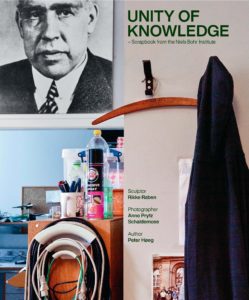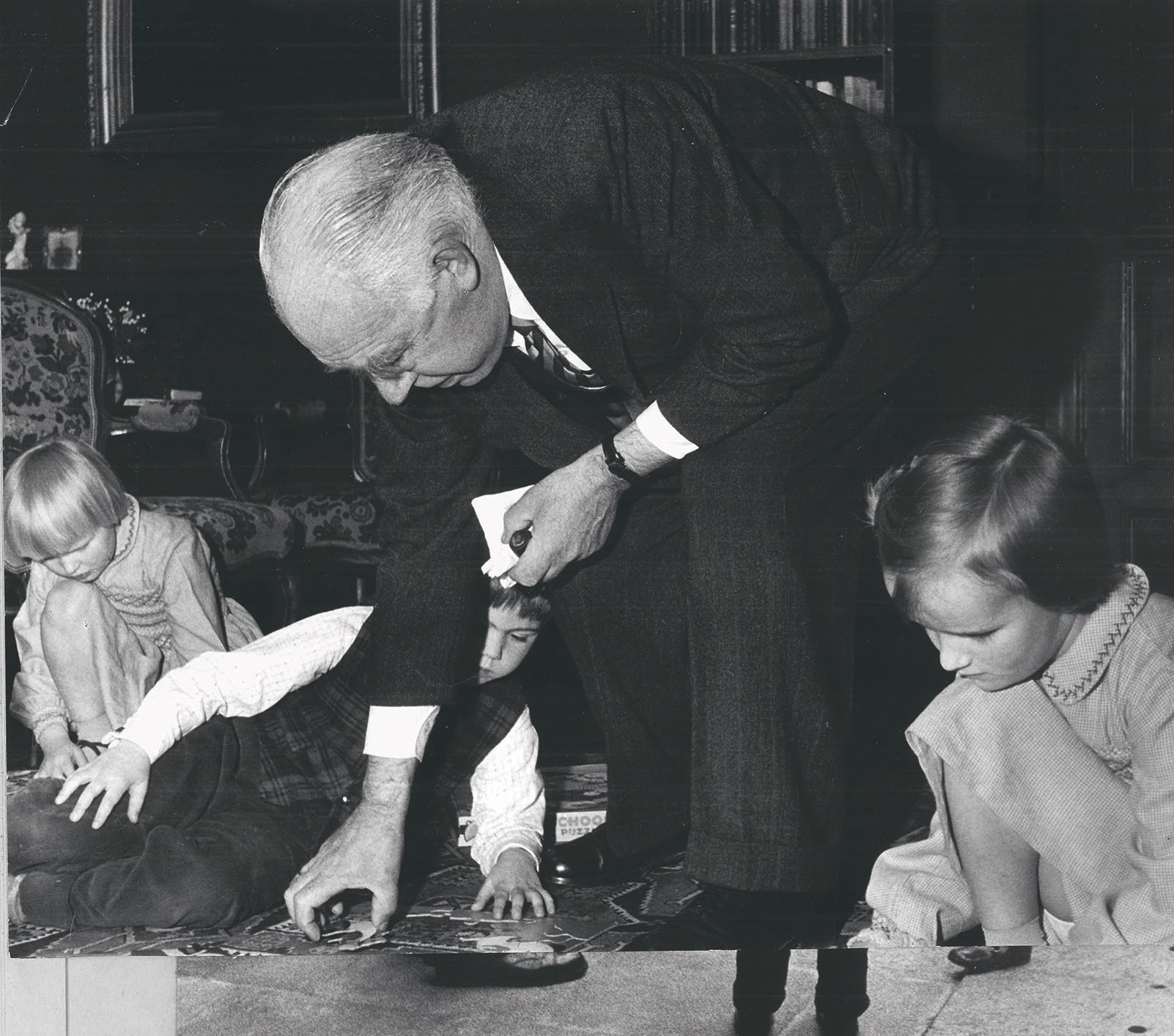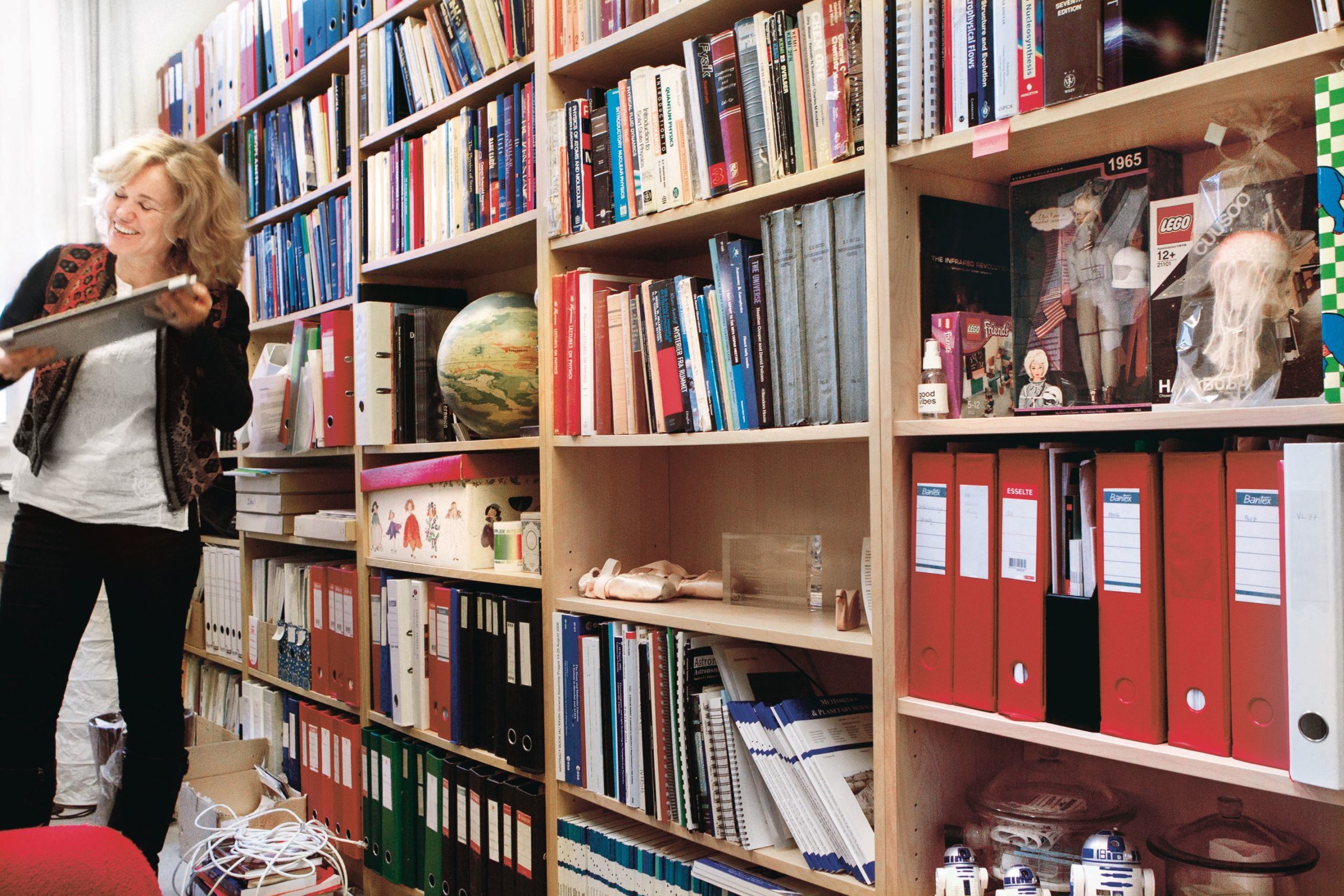Review of Unity of Knowledge

♥︎♥︎♥︎♥︎♥︎
This work, published by the Niels Bohr Institute in collaboration with Strandberg Publishing, is a kind of festival publication. In March 2021 the Institute celebrates its 100th anniversary. The book is presented as a scrapbook, a seemingly random collection of especially historical photos and quotes. Behind the work are a number of foundations that support scientific, social and cultural initiatives.
The title Unity of Knowledge refers to the scientific quest to expand and unite some of the many existing physical and mathematical models of our world. The purpose is not so much to give the reader knowledge of quantum physics, cosmology or climate changes, but more to give an impression of the process, to show how Bohr (1885-1962) and his contemporary and later colleagues with curiosity and openness and in close collaboration have sought, gathered and shared knowledge. A process that, according to the pictures, seems to involve both play and hard work.

From Niels Bohr Archive, København
The work is collected and presented by three artists: sculptor Rikke Raben, photographer Anne Prytz Schaldemose and author Peter Høeg, and consists of three elegantly joined layers: photographs, collages, some text and a few well-known quotes.
The main text itself is an essay by Peter Høgh, who through his authorship has shown great knowledge about and fascination with science and likes to combine this with spiritual considerations. Høeg writes about the need for humility and about the possibilities and limitations of science.
The majority of the book is photographs and collages that illustrate the search for knowledge that takes place at the instute. Many of the pictures have Niels Bohr as the center, others are more recent photos which show today's researchers and students in the process of continuing Bohr and colleagues' work. Together, these images give a sense of an ongoing creative process.

Photo: © Anne Prytz Schaldemose
Some photos are 'texts' in the sense that they show sections of blackboards filled with quantum physical formulas, fragments of a larger context, the 'unity of knowledge' that the researchers hope to find.
A third important part of the work is the few quotes that are scattered around on several pages. Ingenious statements that seek to capture the spirit behind this search for not just more knowledge, but for the meaning itself. But the most and best quotes are those stored in Peter Høgh's text.
A recurring theme in the pictures is the building itself, the people and the work that goes on. Behind it all, one senses an admiration of the people who are working to expand our understanding of the world. There is even a drawing where Niels Bohr's head replaces the sun. But this impression is finely balanced in both text and quotes that admit the limitations of science.
Why are we here?
The book contains no dogmatic messages, but raises some important questions.
A thoughtful perusal gives rise to philosophizing about what the meaning of it all is and where we are headed. A scientific search for more knowledge does not in itself lead to more wisdom. We need meaning, and here the book makes it clear that science must be supplemented with art, spirituality and ethics. The relationship between language and reality is also touched upon. You may even begin to feel a little religious. But it also had that effect on several of the researchers cited. In this way, the book here suggests the need for a spiritual dimension in life. Man does not live on bread alone.

These gentlemen do not require further introduction. From Niels Bohr Archive, København
Unity of
Knowledge
Scrapbook from The
Niels Bohr Institute
Auhtors: Rikke Raben, Anne Prytz Schaldemose & Peter Høeg
Strandberg Publishing
This article is written by Master of Science, Bo Christiansen, KULTURINFORMATION
